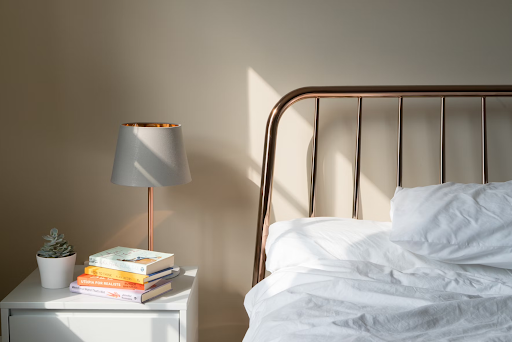How often should you change your mattress?

Author: Jonathan Warren
A good mattress should last a lifetime, right? Wrong! Your mattress isn’t designed to keep you comfortable for eternity and, besides a regular switcheroo, there are plenty of tell-tale signs that indicate it’s time to change your mattress.

Why should you change your mattress?
A bad mattress means a bad sleep - it’s as simple as that. If a mattress is a bit on the old side or has experienced its fair share of wear and tear, it won’t be performing at its best.
Poor sleep is the gateway to increased stress and a hampered immune system. If you’re waking up feeling stiff in the mornings rather than refreshed and energetic, it’s time to change your mattress.
How often should you change your mattress?
Mattresses, like most bedroom essentials, have a shelf life that can vary for a multitude of reasons, including the type of mattress or its manufacturer.
For example, a pocket sprung mattress has an average life expectancy of between seven to ten years, memory foam mattresses should also be changed at around the 7 or 8 year mark. Remember that cheaper mattresses are usually made with lesser-quality materials meaning you’ll have to call in a replacement sooner rather than later - a high price to pay for a short-term saving.
When to change your mattress
It might sound like we’ve not been getting enough sleep ourselves but believe us when we say you should listen to your mattress. If it’s not whispering back sweet nothings to you and giving you the supportive and comfortable sleep you deserve, it’s time for an upgrade. And if your mattress is quite literally squeaking, groaning or creaking whenever you hunker down, take it as a definite cry for help.
You should also change your mattress if you can see a noticeable dip in the middle or if you can feel any springs. Not only do these uncomfortable signs of an ageing mattress spell disaster for a restful night’s sleep but an uneven mattress full of lumps and bumps means your body is no longer being sufficiently supported and could result in long-term back problems.
Hygiene can also play a factor in the decision to change your mattress. Mattresses naturally collect a lot of dust, as well as oils from our hair and bodies, and dead skin cells which can trigger asthma or allergies. If you spot that your health issues flare up when you rest your head after a long day then your mattress might be making things worse, particularly if it’s on the older side!
What is the best type of mattress for the perfect night’s sleep?
Buying a new mattress is an extremely personal thing and deserves some contemplation, after all, whichever new model you choose may well be your sleeping companion for the next ten years! Here are our top picks below:
Pocket sprung mattresses
A pocket sprung mattress is one of the most comfortable and supportive mattresses out there. Our range of pocket mattresses are designed with ultimate comfort in mind; each mattress contains hundreds of pocketed springs that work silently and independently to provide high levels of comfortable spinal support. Hand-tufted and upholstered in a cotton damask cover, pocket sprung mattresses comprise of multiple layers of high-performance hypoallergenic fillings to gift you countless nights of restorative sleep.

Memory foam mattresses
Needing no introduction, memory foam mattresses are very much en vogue, thanks to their body moulding properties that help to relieve your aches and pains. Reducing pressure on the heaviest parts of your body, a memory foam mattress evenly distributes your weight so you can drift off to sleep feeling as light as a feather. With 2000 barrel shaped pocketed springs in a king size memory foam mattress, research has shown that memory foam significantly improves quality of sleep and is highly recommended by back specialists, chiropractors and osteopaths worldwide.




